I made these mini zines earlier this year as freebies to hand out at events. Here’s a freshly folded batch for a public library fundraiser I’m going to in a couple weeks. 🙂 🎨

I made these mini zines earlier this year as freebies to hand out at events. Here’s a freshly folded batch for a public library fundraiser I’m going to in a couple weeks. 🙂 🎨

September page is ready in my bullet journal. I use this page to note appointments and events during the month. The “CO” column is “creative output.” A checkbox for each day I’m working on something creative (outside of the day job).

Here’s my About page, all proper-like. ☺️
📺 Currently watching Terminator Zero on Netflix. I like that they aren’t rehashing stories from the movies. It’s the same universe with new characters.
Millennial lunch 🤭

🍿 I watched the movie Predestination last weekend. It’s based on a short story, called “All You Zombies” by Robert A. Heinlein.
The movie is confusing in that you learn info out of order. But if you’re okay with that, I recommend watching it.
🎵 New music from Dom Fera - “More You Know”
My first post! Hello micro.blog world! I’m excited to use this space as my digital notebook. 🙂
I watched Elemental without knowing what to expect, because Disney’s marketing missed the mark (again). But I liked the movie overall. One of my favorite parts was seeing how each character used their element, like Ember inflating a hot air balloon.
I wanted to draw the scene with the hot air balloon floating over the city. I started with a pencil sketch. It’s rough. I wanted to figure out the foreground vs. the background and where the balloon was in the sky, in relation to the skyline.
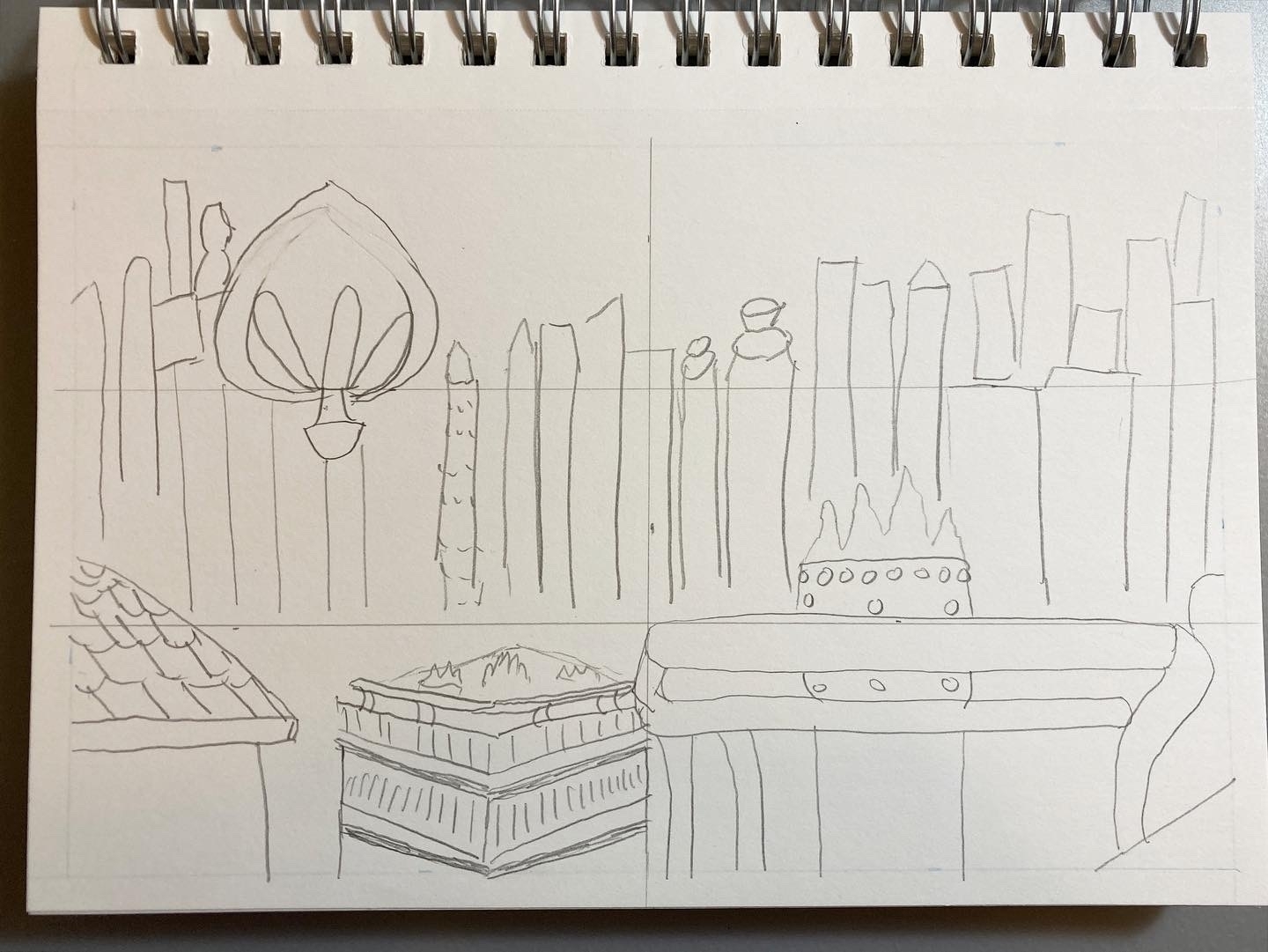
Here’s a photo of when I was painting the larger areas. I simplified colors and composition (all those buildings!) because it’s so much detail.

Here’s the finished drawing.

Here’s an illustration of Bruce Wayne’s mansion (Wayne Manor).
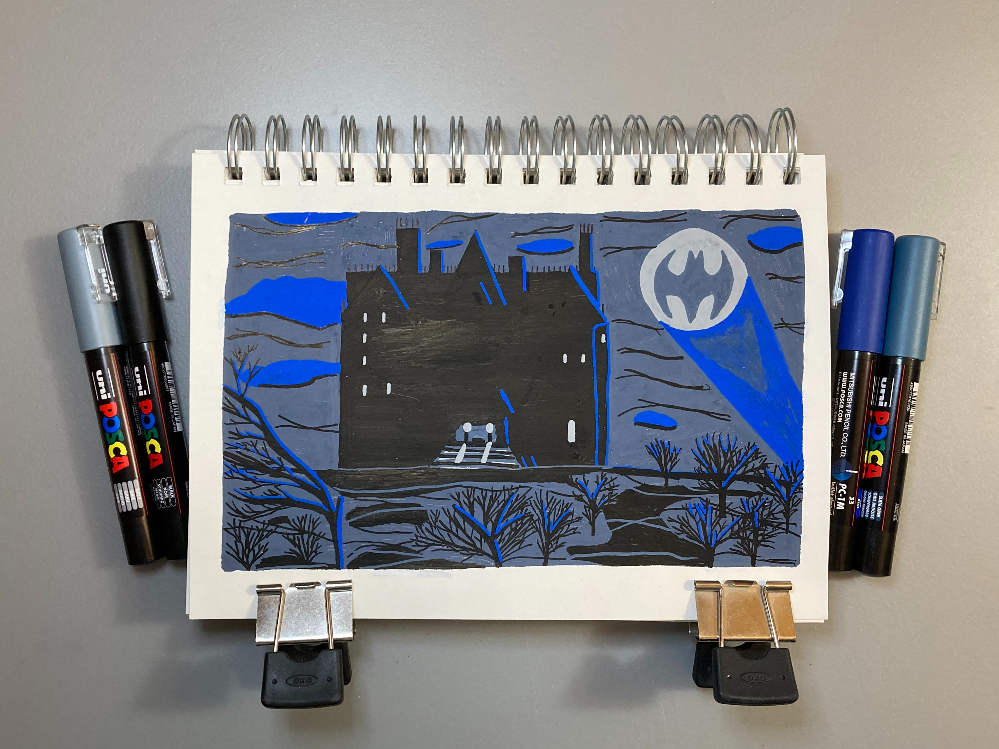
I really like how the blue highlights contrast against the black on the building and the trees.
Here’s the pencil sketch I started with.

Here’s an illustration of Bluth’s Original Frozen Banana Stand from Arrested Development.
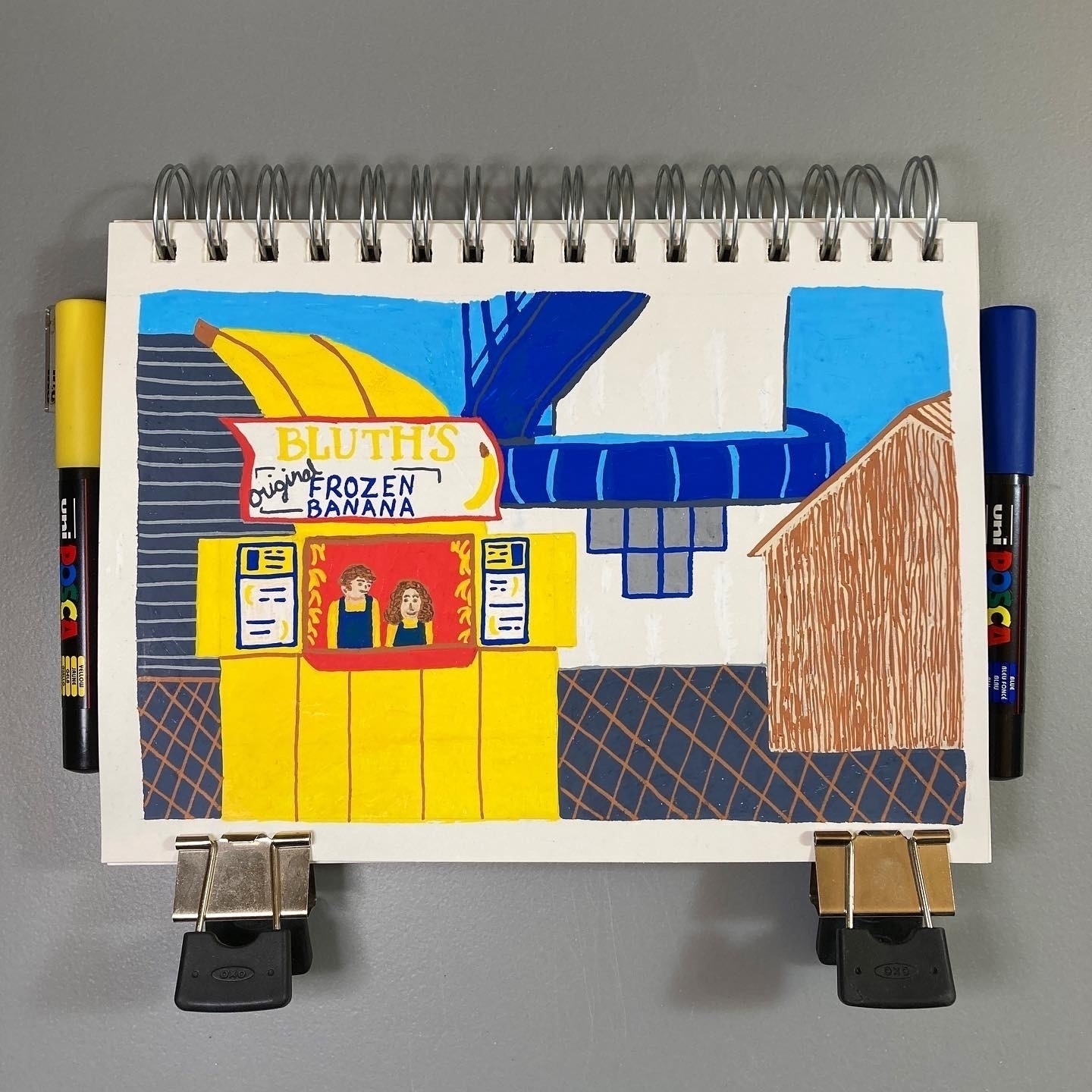
I started with a pencil sketch to draw the outline of each building.
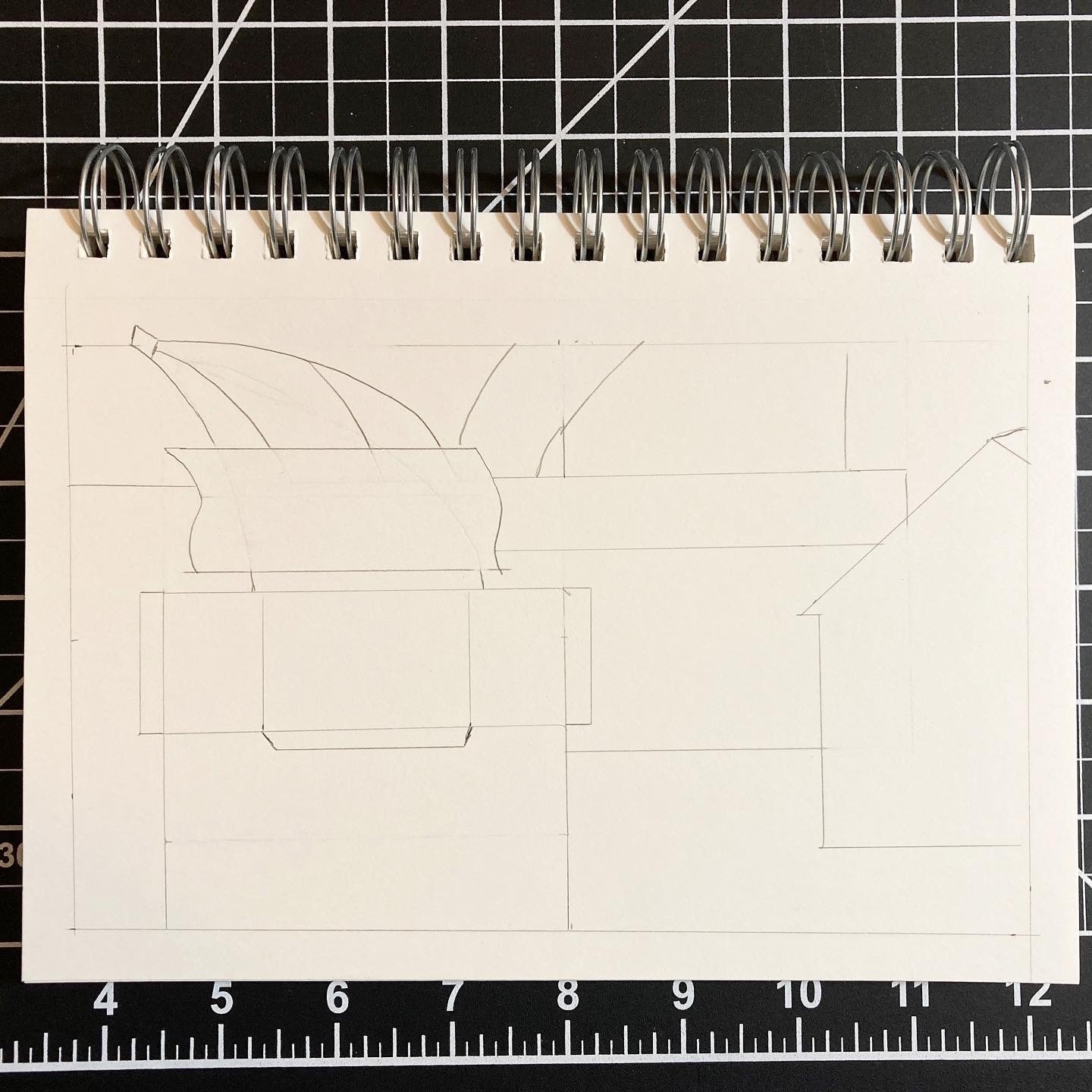
Here’s an illustration of the Metropolis skyline at night.
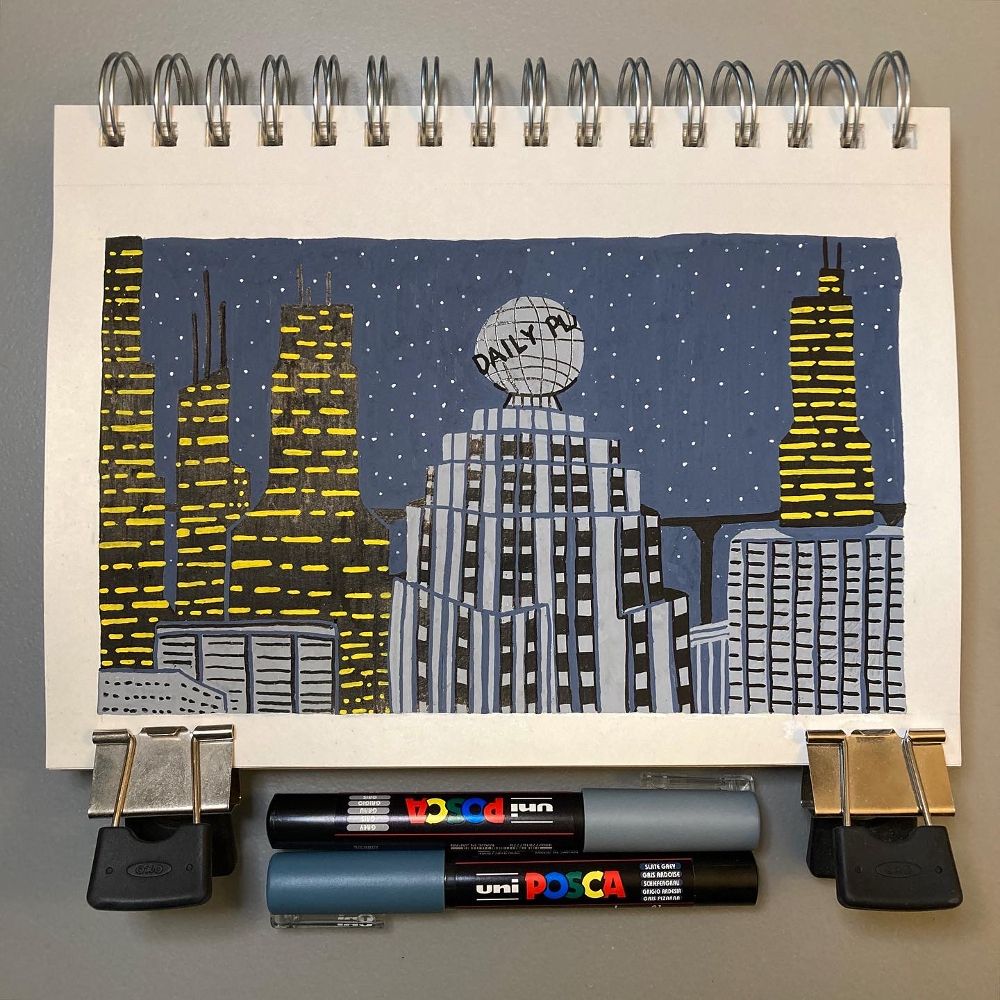
I started with a pencil sketch to outline each building.

I started painting by covering the large areas first: slate gray for the sky, black for some buildings, and gray for some buildings.
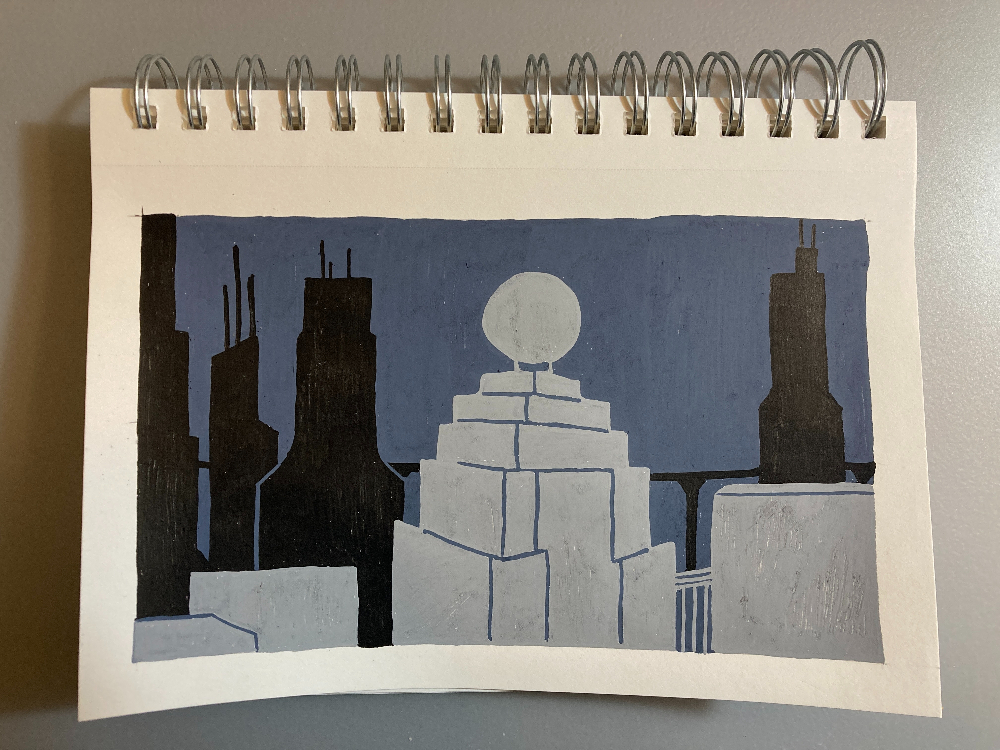
Then I added in all the details.

Here’s an illustration inspired by a scene in Back to the Future: Marty walking into Hill Valley.

I made this as part of a course on illustrating with Posca pens. The assignment was to use two shades of the same color as the main colors in the piece. Since a lot of this image is grassy fields, I chose two shades of green. I kept Marty’s outfit realistic (orange vest and blue jeans) to signify that he’s out of place…or, more accurately, out of time.
Here are some thumbnail sketches I did prior to painting the scene. I wanted to test out colors–what looked good for the grass and Marty’s outfit.

And here’s the simple pencil sketch I started with.
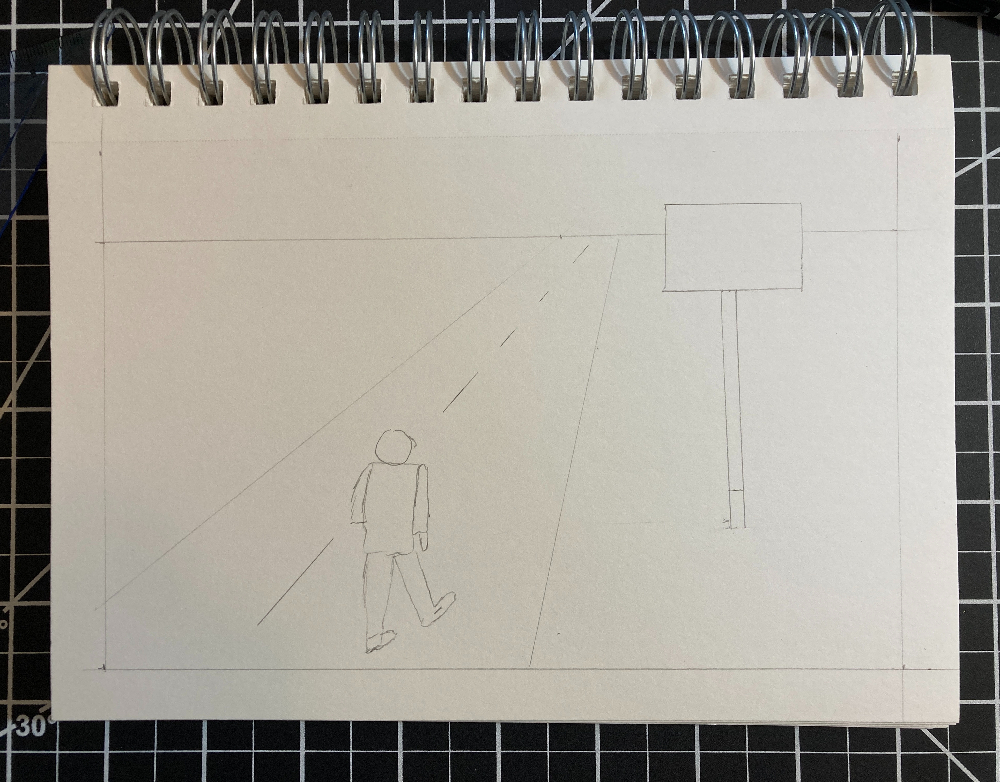
I took an online course on illustrating with Posca pens taught by James Chapman. He has posted lots of his sketchbook pages to his Instagram.
I had a couple Posca pens for a few years, but I hadn’t done much with them. I saw this course and thought it would be a great way to practice with Posca pens.
The course covers how to create a pencil sketch to get the composition down. Then it explores various color schemes to determine how to color the illustration. I especially like the challenge of limiting the number of colors used.
I like the process I learned in this course. It takes me several hours to finish an illustration, but I really enjoy the time I’m spending learning and practicing.
The course encourages choosing a theme that will motivate you to keep working on sketches. I chose places in movies, TV shows, and books. First up is The Candy Bar from Jimmy Neutron.
Here’s the pencil sketch:

I chose to go with realistic colors, so I used Posca pen colors that are close to what this location looks like in the show.
Here’s a progress photo, with the larger areas of color done:

And here’s the finished illustration:
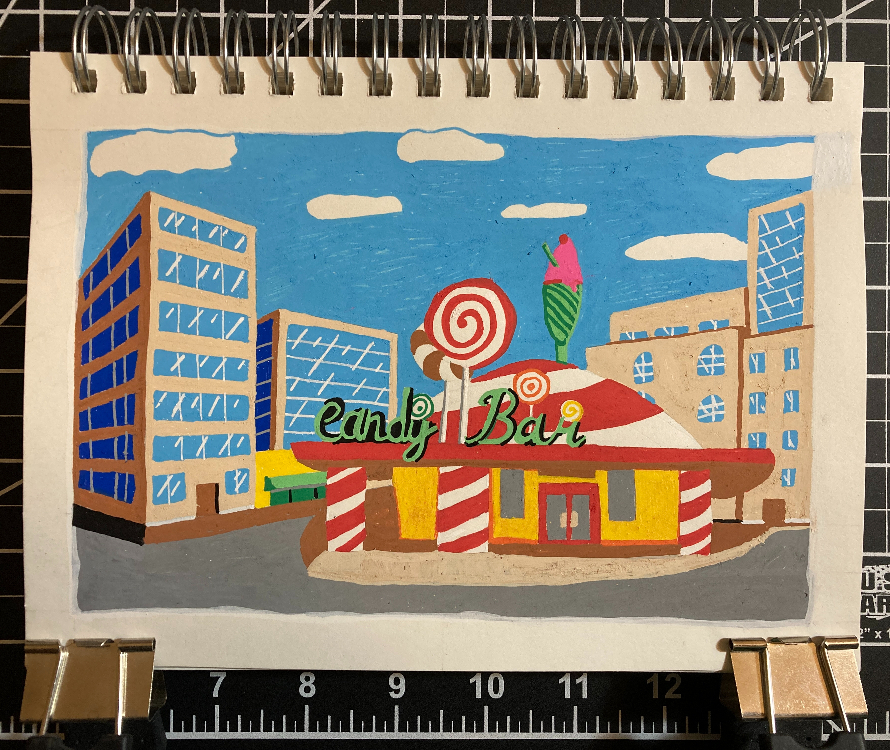
I really enjoyed making this as my first attempt at a Posca pen illustration!
This is the best advice I have read about creative work:
Be boring. (It’s the only way to get work done.)
It’s from Steal Like An Artist by Austin Kleon, which is an excellent book for anyone interested in creative work. It’s full of practical advice.
Most people have to practice their art for a while before they can make a living off of it, so in the mean time, they need a regular job. Austin says, get a job you can tolerate, pay your bills, and build a routine. When you have regular hours that you work, you know what time you have left, and you can carve out time to write stories, compose music, take photos, draw…whatever it is that you do.
Better yet, Austin points out that if your job doesn’t take a lot of creative energy, you’ll be happy to pour that energy into your hobbies. You take care of yourself, and you keep your mind in the right place to produce art.
This is more useful than the advice I’ve seen that focuses on craft. Other books I’ve read on writing tell me to set a daily word count goal and find a distraction-free space—which is fine, but they don’t connect creative work to the rest of your life.
Steal Like An Artist is the first book I’ve read that blends creative work with the average, day-to-day things. It’s the first time I’ve said, “Yeah, that’s something I can try today.”
I started watching Abstract: The Art of Design on Netflix. It’s a documentary series where each episode focuses on one designer and a different kind of design.
One episode is about Neri Oxman, a professor at MIT Media Lab. She leads a research team in exploring materials informed by nature. (Think: a strong plastic-like material made from proteins found in milk.)
In the episode, she talks about the relationship between art, science, engineering, and design. Usually, we think of them as four separate areas. You work in one domain but not the others. But Neri says, what if, instead, we thought of them as a circle? As a clock, where we shift from one discipline to another over time. Input from one domain becomes the output of another.
Neri uses architecture, design, engineering, and biology in her work, so it makes sense that she talks about interdisciplinary work.
A diagram displays on the screen at this point of the episode, and I paused it to draw it myself. When I see a diagram that clicks for me, I love recreating it as my way of learning.
Here’s the circle, with the disciplines each having their own domain, but now connected.
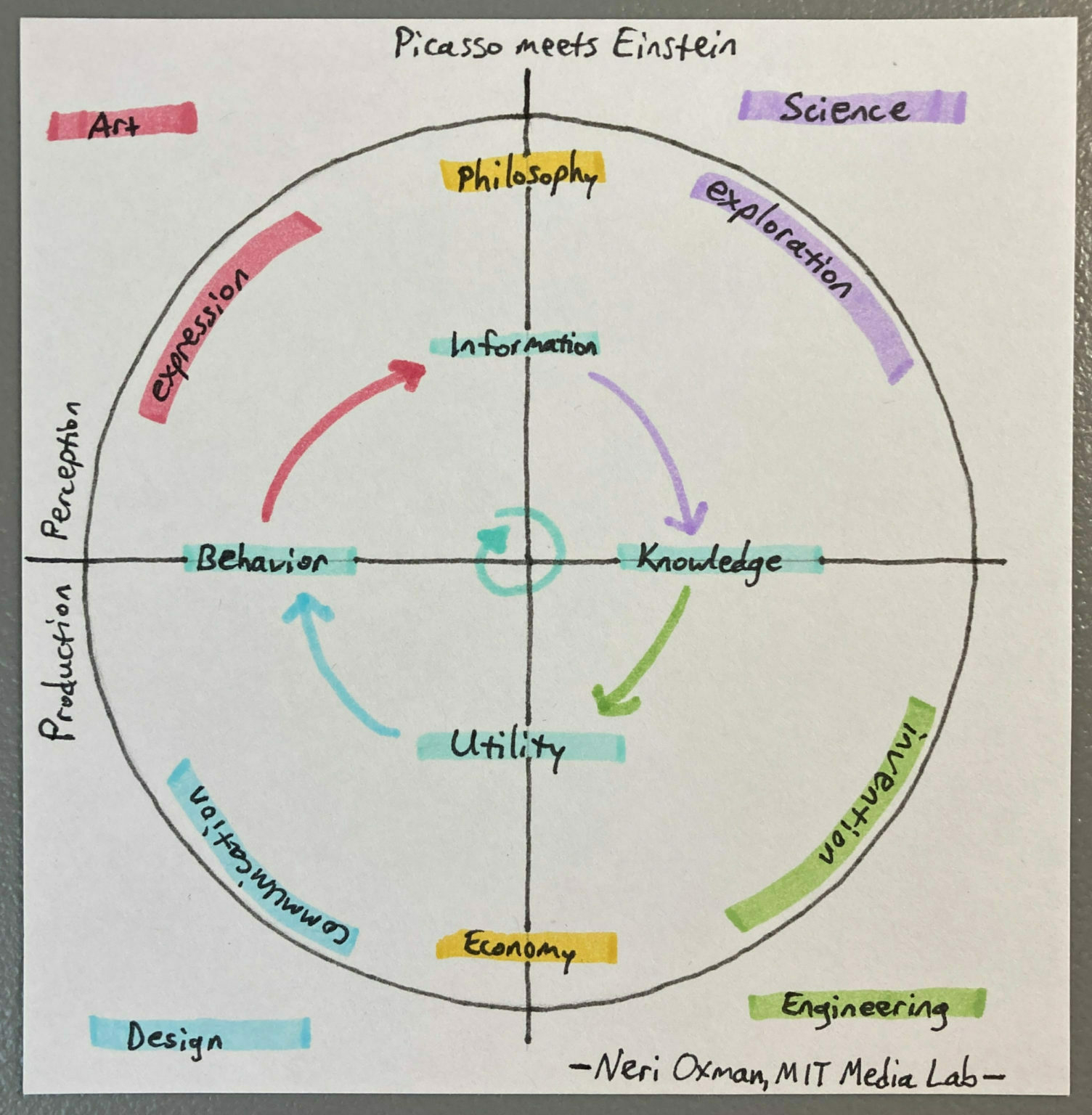
I’m paraphrasing the explanation from the documentary:
Art is for expression. It looks at cultural behavior, which leads to questioning presumptions about the world. These questions lead into science.
Science is for exploration. We gain information (input from art) and turn it into knowledge (output to engineering).
Engineering is for invention. It takes knowledge and turns it into utility for design.
Design is for communication. We take utility, give it context, and turn it into cultural behavior (which is then expressed as art).
Full circle.
Continuing with the clock analogy, Neri says that at the midnight position, that’s where art meets science, where Picasso meets Einstein.
I love this model because it shows the value of these disciplines working together. Rather than limit work to one domain, you can shift through domains (with a team…no one is an expert in all four areas) to create a full understanding, exploration, use, and expression.
I was organizing some old files and found a short story I wrote in 2009 while studying abroad in Buenos Aires, Argentina. I thought I had posted it here at some point, but no, I hadn’t. Now seems like a good a time as any. So, here it is.
Every Wednesday between classes, I have two hours to kill. Two hours to be productive by reading a long article in Spanish about magical realism and the writers who best exemplify the movement. Two hours to drink tea (I don’t like coffee and it’s terrible here anyway) or watch the news on TV (la presidente is visiting Chile this week, the highlights of yesterday’s fútbol game). Two hours to pretend to be a local while I sit in this café.
This is routine for me now. After Art History, I take the B-line two stops east to the “microcentro,” the business and theater district of Buenos Aires. It’s not actually in the center of the city. It’s more northeast, but that’s how it is in Buenos Aires—people say things they don’t mean.
I come to this café every Wednesday morning at 10:30, give or take a few minutes. The menu here is huge, physically and in terms of options for breakfast and lunch. I’m not much of a breakfast person, so I order té con leche (tea with milk) and medialunas. The tea is a British brand, nothing special, but medialunas are the best food I’ve eaten in Argentina. They’re palm-sized croissants with flaky dough and come in two varieties: plain or sweetened with a thin coat of syrup on top. Most places have only the sweetened kind, and I won’t complain about that.
The waiter comes back with a full tray. I ordered two things, right? But not even the menus here are clear on what they mean. Té con leche means I get a large mug with a saucer, a tiny pitcher of warm milk on a saucer, a small teapot of hot water on a plate, and a tiny glass of orange juice.
The first time I ordered tea in Buenos Aires, I thought it was a strange custom of mixing orange juice into your tea. But no, the locals drink the orange juice separately. A little bit of vitamin C never hurt anyone.
Medialunas come in a basket. If they’re larger ones, you get three. Smaller ones, four.
My square table that is supposed to seat two is covered with excessive glassware. I rearrange everything into an arc around me to make space for that magical realism article. The page I’m on is talking about Julio Cortázar’s use of time. He likes to jump around a lot.
I unwrap the tea bag and drop it into the teapot. I look up at the TV and see that the public bus employees are striking this afternoon. Fine, I take the subway home on Wednesdays anyway. After the tea steeps, I fill my mug halfway. The rest I fill with milk.
Some of my friends back home joke about how much sugar I put in my tea. As in, I have some tea with my sugar. That didn’t change when I switched hemispheres. Most people in Buenos Aires have too much sugar and caffeine anyway. It’s because they stay up late and wake up early. Every kiosk on every street corner has a variety of sweets and candy bars to give you a sugar boost any time of the day. The waiter probably doesn’t think anything of the three sugars I put in my tea. Either that or he’s used to it by now. I always have the same waiter.
When you walk into most shops in Buenos Aires, employees will immediately walk up to you and ask what you’re looking for. This makes sense for two reasons. One, they want to make a sale, and two, direct contact with customers reduces shoplifting.
Restaurants and cafés don’t work that way. Usually you walk in and find a table yourself. When the waiter notices you, he gives you a menu. You have to wave him over when you’re ready to order. You may take your time eating and sit for as long as you like, and then you have to get the waiter’s attention again for the bill.
Americans are used to attentive waiters so the first few times I ate out were frustrating, but I don’t mind as much anymore. The locals are better at it than I am, but I’m getting there.